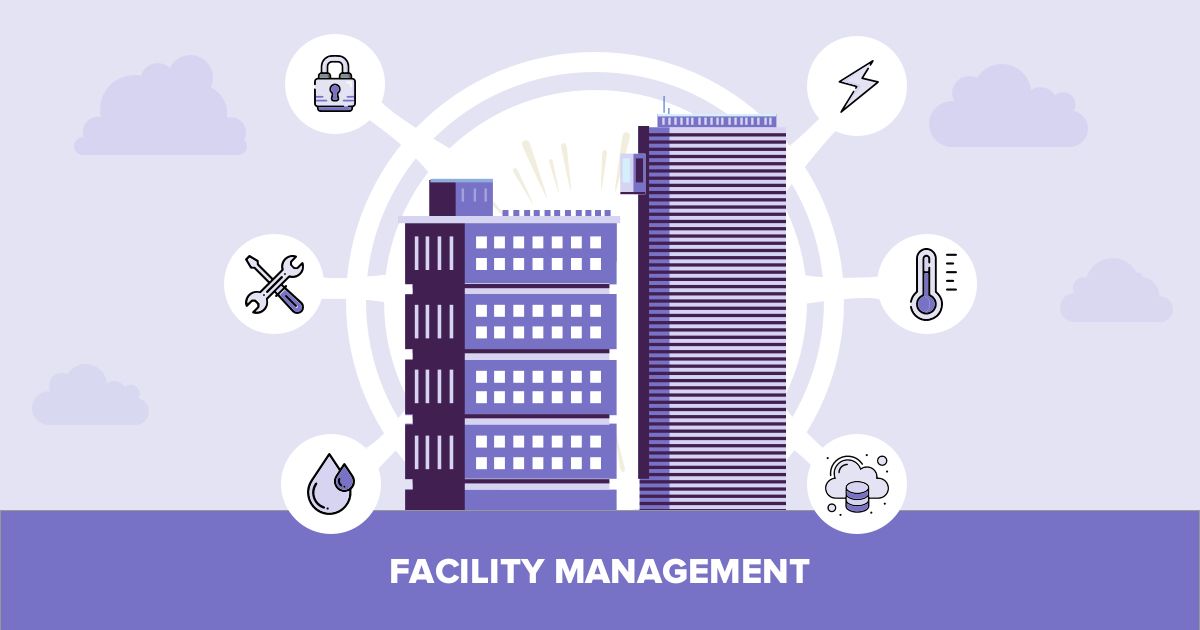Facility Management for Commercial Buildings-- A Full Summary
Wiki Article
Key Patterns Forming the Future of Facility Management in 2024
As we look in advance to 2024, the landscape of facility administration is positioned for substantial makeover, driven by numerous vital trends. The combination of wise structure technologies and a shift towards data-driven decision-making pledge to boost functional efficiency while prioritizing sustainability in practice. Moreover, the appearance of crossbreed work designs is improving workplace settings, demanding cutting-edge design solutions that accommodate developing worker requirements. Amid these changes, the concentrate on occupant health proceeds to obtain grip, emphasizing the relevance of a healthy and balanced office. Exactly how these patterns will certainly manifest in technique remains an essential question for industry experts.Smart Building Technologies

Smart building innovations incorporate a wide range of systems, including intelligent lights, cooling and heating controls, and safety and security systems. By integrating these systems, center supervisors can check and adjust parameters in real-time, resulting in considerable reductions in energy waste and operational expenses. For circumstances, wise sensing units can detect occupancy levels and readjust lights and temperature level as necessary, ensuring that energy is only used when required.
Furthermore, these technologies facilitate enhanced information collection, enabling organizations to track usage patterns and recognize possibilities for additional improvements. The implementation of clever structure innovations not only adds to sustainability objectives but also develops much healthier workplace that can enhance worker efficiency and complete satisfaction.
As we move right into 2024, the fostering of smart structure innovations will likely speed up, mirroring a wider shift in the direction of more smart, receptive, and sustainable center management practices.
Data-Driven Choice Making
Increasingly, companies are leveraging data-driven decision making to boost facility monitoring methods. By harnessing data analytics, center managers can acquire actionable understandings that substantially improve functional performance and resource appropriation. The combination of innovative innovations, such as IoT sensing units and real-time monitoring systems, makes it possible for the collection of large quantities of data on structure efficiency, occupancy prices, and power consumption.This riches of details enables center supervisors to identify fads, predict maintenance demands, and proactively address problems prior to they intensify. For example, predictive analytics can anticipate tools failures, lowering downtime and fixing expenses. In addition, data visualization tools help with far better interaction amongst stakeholders, guaranteeing that educated choices are made collaboratively.
Moreover, data-driven methods improve calculated preparation by making it possible for center supervisors to assess the effectiveness of current methods and make notified options pertaining to financial investments in technology or infrastructure. As organizations progressively prioritize operational excellence, data-driven decision making is positioned to become a cornerstone of effective center monitoring approaches in 2024 and past. Inevitably, the capacity to take advantage of information successfully will equip organizations to produce much more effective, efficient, and resilient facilities.
Sustainability and Green Practices
The focus on data-driven choice making naturally aligns with the growing concentrate on sustainability and environment-friendly techniques within facility management. As organizations significantly focus on environmental responsibility, center supervisors are leveraging analytics to enhance resource usage, lower waste, and lessen carbon footprints. This strategic strategy makes it possible for the combination of energy-efficient systems, such as LED lighting, clever a/c controls, and renewable resource resources right into facility procedures.Moreover, the execution of lasting techniques extends beyond power intake. Facility supervisors are advertising and adopting green materials reusing initiatives to develop a circular economic situation within their facilities. This not just improves the ecological profile of the company but additionally fosters a society of sustainability among workers.
Conformity with environmental laws is another essential element driving the fostering of green techniques. By utilizing data analytics, facility managers can keep an eye on compliance metrics and determine locations for improvement, making sure adherence to global and local sustainability requirements.
Crossbreed Job Models
A considerable change towards hybrid work designs is improving the landscape of facility administration in 2024. This standard incorporates remote and in-office work, requiring a reevaluation of room utilization, resource allotment, and staff member involvement strategies. look these up Organizations are progressively acknowledging the relevance of flexible work areas that cater to varied demands and choices.Facility supervisors need to adapt by applying flexible office styles that support joint efforts while supplying areas for concentrated job. This includes the combination of modern technology to promote smooth communication and collaboration amongst remote and in-office workers. Smart building options, furnished with analytics and sensing units, permit for real-time tracking of room usage, allowing companies to optimize their atmospheres successfully.
Furthermore, hybrid work designs highlight the requirement for efficient facility management that prioritizes employee experience. In essence, the crossbreed job version is changing center monitoring, urging a positive technique to satisfy the developing demands of the workforce.
Boosted Owner Health
As companies accept hybrid work versions, an enhanced emphasis on resident wellness is becoming indispensable to center management strategies. Facility Management. This change identifies that a completely satisfied and like it healthy workforce straight impacts performance and retention rates. Center managers are now prioritizing settings that advertise physical and psychological wellness, incorporating aspects such as natural lights, biophilic style, and accessible wellness sources

Technology plays an essential function in this development. Smart building systems can keep track of environmental elements and change settings in real-time, ensuring optimal convenience degrees - Facility Management. In addition, responses devices, my sources such as tenancy sensing units and worker surveys, enable facility supervisors to consistently improve wellness campaigns based upon resident requirements.

Verdict
In 2024, the future of facility management will be considerably influenced by the combination of smart building technologies and data-driven decision-making, fostering improved operational efficiency. These fads jointly emphasize the advancing landscape of center administration in action to modern difficulties and chances.Facility managers are promoting and embracing environmentally friendly materials reusing campaigns to produce a circular economy within their centers.A considerable shift towards crossbreed work models is improving the landscape of center administration in 2024.Furthermore, crossbreed job designs emphasize the need for reliable center management that focuses on worker experience.As organizations embrace hybrid work models, an enhanced emphasis on resident wellness is coming to be important to facility monitoring methods.In 2024, the future of facility administration will be dramatically influenced by the combination of clever building technologies and data-driven decision-making, cultivating improved functional efficiency.
Report this wiki page